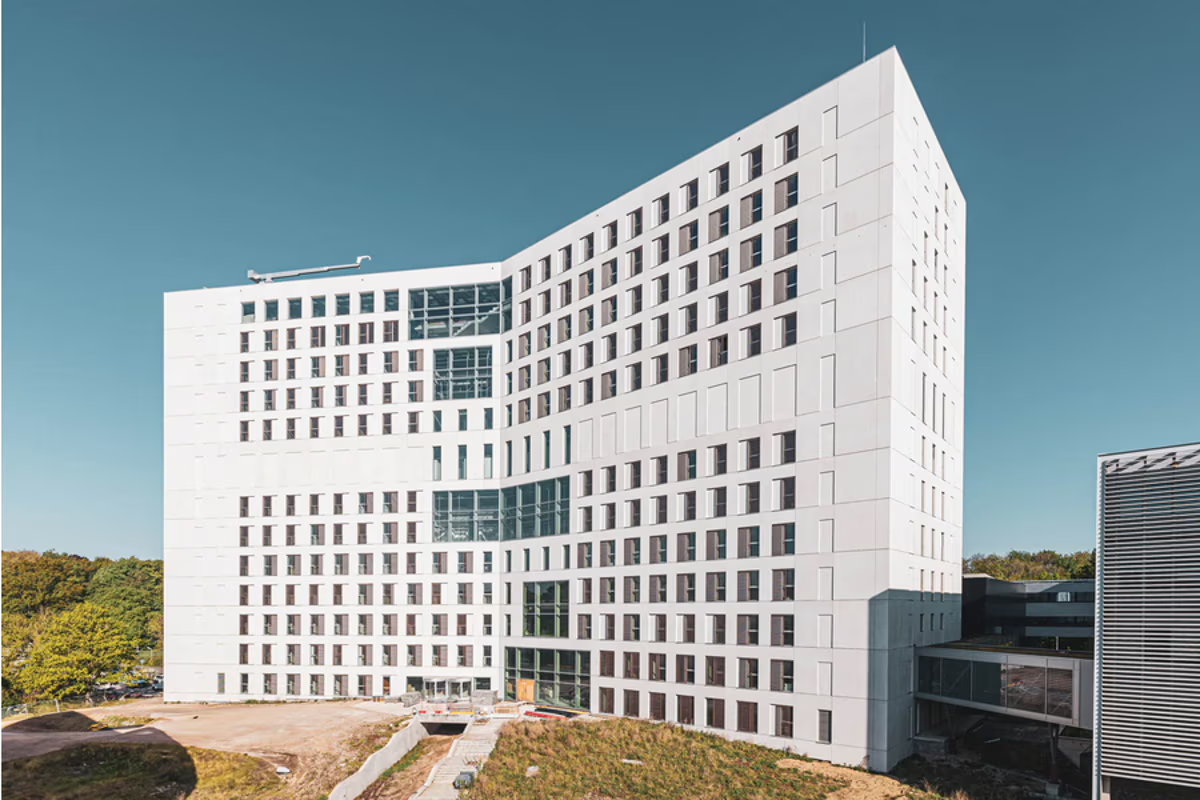KU Leuven has officially inaugurated its new BioScience Centre, a state-of-the-art research facility designed to set new international standards in sustainability, flexibility, and interdisciplinary collaboration. Located in Leuven’s Arenberg Science Park, the building will host 500 life science researchers currently scattered across various sites, bringing them together under one innovative roof.
Spanning over 30,000 m² and rising 14 storeys high, the BioScience Centre combines 7,900 m² of modern laboratories with office space, teaching labs, a lecture hall, cafeteria, and communal “living” areas. These open spaces are designed to foster spontaneous encounters and knowledge exchange across disciplines. “This is more than a workplace. It’s a meeting place,” said KU Leuven rector Luc Sels at the launch.
Sustainable design
Architecturally, the building connects via bridges and a tunnel to the adjacent Chem&Tech and NanoCentre buildings, forming a strategic hub for scientific research in the region. But it’s the energy concept that truly sets the centre apart. The building uses no fossil fuels and integrates a geothermal system, five advanced heat pumps, and dry coolers to deliver year-round energy efficiency. Combined with KU Leuven’s purchase of renewable electricity, the entire facility operates close to climate-neutral.

Additional features include south-facing sunshades, north-side ventilation intake, rooftop solar panels, a rainwater harvesting system, and a large underground bike garage. A centralised ventilation system on the seventh floor minimises ductwork and fan energy across the building. These choices reflect KU Leuven’s broader commitment to sustainable infrastructure.
The building’s flexibility ensures it can evolve with the scientific needs of tomorrow
Designed by Proof of the Sum, SVR, EXILAB, and De Klerck Engineering, the €69 million building will welcome its first researchers from mid-2025. As vice-rector Gerard Govers put it, “We’re investing not only in science, but in sustainable wellbeing. The building’s flexibility ensures it can evolve with the scientific needs of tomorrow.”










